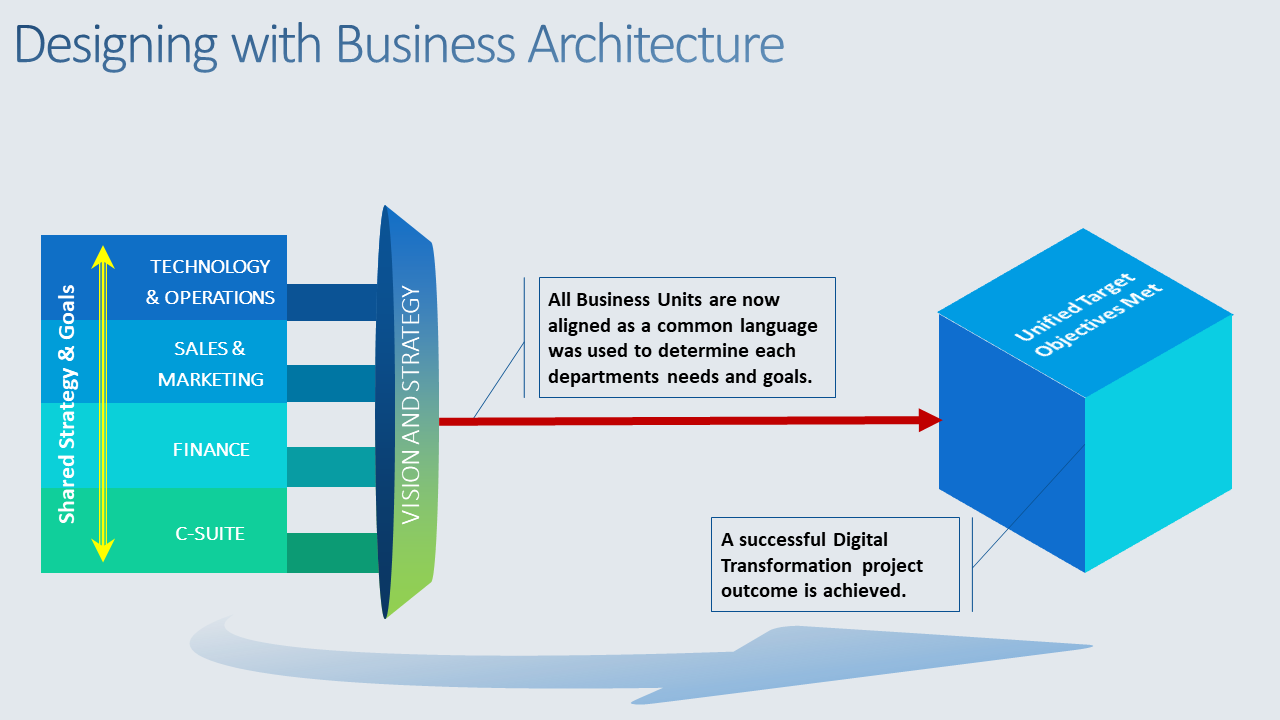Understanding Business Architecture and Building a Strong Business Case
Understanding Business Architecture and Building a Strong Business Case
Business Architecture (BA) has become essential in recent years, transforming into a strategic tool for companies to navigate complex challenges in innovative ways.
Clarifying Concepts – Business Architecture versus Enterprise Architecture
Enterprise Architecture and Business Architecture are often confused, but they serve different functions. Business Architecture is a crucial part of Enterprise Architecture, providing a framework to connect and align other domains.
Business Architecture gives a detailed view of a company’s structure, both at strategic and operational levels, while Enterprise Architecture offers a broader perspective, including the integration of various domains with Business Architecture.
Industry groups have recently agreed upon these definitions:
Enterprise architecture is the comprehensive process of planning, analyzing, designing, and implementing strategies for the development and execution of business plans, ensuring alignment across various architectural domains.
Business architecture is the multi-faceted blueprint of business capabilities, value delivery, information, and organizational structure, along with their interrelation to business strategies, products, policies, projects, and stakeholders.
Key Elements of Business Architecture
Business Architecture is composed of several elements:
- Purpose and Direction: Vision, Goals, Objectives, Mission, Strategies, and Plans.
- Offerings: Products and Services.
- Structure: Organizational Structure, Roles, and Locations.
- People: Stakeholders such as Partners, Suppliers, Regulators, and Customers.
- Operations: Capabilities and Processes.
- Knowledge: Key Information Objects (e.g., customer and product data).
These elements shape the Business Architecture domain, guiding aligned technological governance within the broader Enterprise Architecture.
A Closer Look at Business Architecture
At its core, Business Architecture is the master plan of how a company functions. It aligns departmental actions with the organization’s overarching goals and details processes, governance, and information management, focusing on operational efficiency and strategic coherence.
In practice, Business Architecture results in resource and time savings. Real-world examples include:
- A government agency implementing a customer self-service system.
- A pharmaceutical firm streamlining a major merger.
- An international airline adopting similar BA strategies.
- A global finance company aligning its operations with a new business model.
- A large financial institution managing a complex post-merger integration.
Recognizing the Need for Business Architecture
Business Architecture emerges between strategic and tactical needs. It identifies a unified view of initiatives, bridges the gap between strategy and execution, responds to market changes, addresses operational inefficiencies, controls spiraling costs, and aligns IT with business objectives.
Recognizing these drivers is the first step in realizing the necessity for Business Architecture.


The Value Proposition of Business Architecture
Understanding the importance of Business Architecture is crucial. Crafting a value proposition that resonates with stakeholders is key to gaining executive support.
Here are several strategies to build your case:
Bridging Strategy and Execution
- Link strategic pillars to business capabilities.
- Assign measurable key performance indicators (KPIs).
- Align funding with core capabilities.
Offering a Comprehensive Business Perspective
- Provide a complete view of the business including capabilities, data, and processes.
- Highlight the connectivity, overlaps, and synergies for all stakeholders.
Developing a Shared Language
- Promote a common terminology across business and IT.
- Communicate effectively throughout the organization.
Breaking Down Barriers Between Business and IT
- Shift focus from isolated projects to long-term, integrated capabilities.
- Align strategic and operational efforts, including IT initiatives.
Presenting Business Architecture to Senior Leaders
Presenting the value proposition requires a balance between hard data and persuasive storytelling. Prepare to articulate the benefits of Business Architecture in a way that is both compelling and grounded in positive outcomes.
Choosing the Right Frameworks for Business Architecture
Selecting a framework can be difficult. It’s often best to combine elements from different frameworks to suit your organization’s unique needs. Our Docs Site is designed to support your Business Architecture endeavors.
Components of Your Business Architecture
As you start building your Business Architecture, focus on identifying the most critical components, such as:
- Strategy Clarification: Understand the “why” behind actions.
- Business Capability Modeling: Map out the company’s core functions.
- Organizational Structure: Define roles and relationships.
- Data Management: Establish how business data is used and
Demystifying Business Architecture and Crafting Your Business Case
Business Architecture (BA) has risen to the forefront as an indispensable tool for companies, offering innovative solutions to address significant challenges.